Reviews
A Medieval Odyssey
Vincent Ward
Australia / New Zealand, 1988
Credits
Review by Thomas Scalzo
Posted on 11 August 2010
Source Trylon Video VHS
Categories Favorites: Time Travel
You are about to watch the time-travel adventure film THE NAVIGATOR. DO NOT ADJUST YOUR SET. The first minutes of THE NAVIGATOR are shown in the stark black and white of 14th Century England during the period of the black plague. At the moment when The Navigator’s 14th Century travelers begin to reach the time warp of the modern 20th Century, the world of THE NAVIGATOR bursts into color on your screen.”
So read the helpful instructions at the start of The Navigator, words that serve to alleviate concerns about the functioning of our VCRs and pique our interest of the tale that is to come. Black plague! Time warp! Color! Let the navigating begin.
As stated, we begin in Medieval England, in a small mining town in Cumbria to be precise, immersed in the gritty toil of a hardscrabble, cowl-wearing populace. Picking his way among the laboring adults is a young boy named Griffin, a well-known dreamer who’s spent the better part of a month watching the horizon for a sign of his brother, Connor. It seems Connor has dared to make a journey to the distant city, and is some weeks overdue. Duty calls, however, and though Griffin would prefer to spend the day dreaming and waiting for his brother, he trudges obediently to the town’s copper mine. No sooner is he lowered into the earth, however, than shouts arise from above. “Connor!” the voices exclaim. Connor has returned!
Like a hero of old, Connor strides into town, his sturdy frame enshrouded in a ragged robe, his head covered in a scruffy hood, his eyes alight with unquenchable vivacity. After shouting a greeting to his mates, he spots his brother. Taking the boy’s head in his hands he holds him close, and both of them smile at the long sought reunion. But the joy of this moment is sadly short lived. With his expression assuming a ghostly pallor, Connor addresses the villagers, and the news he brings of the wider world is dire indeed. The dreaded plague is abroad. Death reigns supreme. In many a town, there aren’t enough folks left alive to bury the dead. And before the next full moon, the great pestilence will surely be upon them.
Following the storytelling techniques of timeless tales of adventure, The Navigator moves briskly from one plot point to the next, introducing a few bits of characterization here and there, but never straying from the straight path of the story. We hear mention of Connor, Connor returns. We learn the plague is raging, the villagers try to stop it. Even when the fantastic journey through time begins, the film doesn’t linger on the details of how this journey is possible. We’re simply informed that Griffin had a dream about tunneling through the copper mine to the other side of the earth. Once there, they must make an offering to the great cathedral. If they do this, according to his vision, the town will be saved. And before you know it, a small band of heroes is punching their way through a rock wall and into a bustling urban center, circa 1988.
Unexpectedly, this sudden emergence into a world over six hundred years removed from their own does not divert the men from their mission. Yes, there are a few moments of fish-out-of-the-water fun, including a harrowing highway crossing and a bewildering glimpse at television, but the time-traveling crew does not allow these curiosities to distract them from their ultimate objective. In fact, the film takes great pains to highlight the similarities, not the differences, between the 14th and 20th centuries, consistently offering the men tangible reminders that this strange new world is still their own.
Soon after arriving in 1988, the group happens upon a foundry and the blacksmiths who work there. As miners accustomed to working with metal, this makes the travelers feel right at home. And once they have convinced the blacksmiths to help them, they ask for and receive precise directions to the nearest church. The town may be large, and full of strange sights and sounds, but two of the cornerstones of the traveler’s medieval lives - the foundry and the church - are right where they should be. Thus, unlike befuddling time-travel films that become hopelessly tangled in paradox and illogic, The Navigator consistently pushes the time traveling itself into the background.
The question that arises, then, is why bring these travelers to the future at all? Sure, the strange new world the men find themselves in enhances the adventure, makes an epic journey even more astonishing, and makes a tall tale even taller. But is this enough of a reason to incorporate such a radical narrative shift? Why not keep the story fixed in the 14th century and send the travelers off to a far away land in search of a magnificent cathedral of their own time?
One simple explanation is budget. By transferring a significant portion of the narrative to the modern world, the central action of the tale can be told without having to resort to elaborate special effects. Though the 14th century scenes are effectively handled, it becomes clear that greater exposure to that time period would only have served to amplify its visual shortcomings. After a time, the regular use of extreme close-ups - limiting our medieval exposure to a few ramshackle structures, a lake, and a barren hillside - coupled with washed out black and white cinematography would likely have detracted from the tale. Thus it can be argued that the incorporation of a 20th century storyline was merely an economical way to tell this story.
Even if budgetary concerns did play a role in the shaping of this screenplay, however, the fact does not fully account for the emphasis placed on the film’s shifting of centuries. Why go to such lengths as to create a prologue that effectively gives away elements of the plot if the time traveling is ultimately irrelevant? No, there must be more at work here, a subtle message lurking beneath the folds of this unique adventure.
The beginnings of an explanation lie in the prophetic visions of young Griffin. Unlike youthful dreamers who envision fantastic worlds of beguiling unreality, Griffin sees the future as it truly, and sometimes brutally, is. We are thus left to assume that Griffin’s imaginings are no mere daydreams but powerful visions of prophecy, potent harbingers of things to come. The traveler’s quest - to raise a spire high atop the 20th century church, completing a task begun in the traveler’s own time - thus takes on a deeper and more far reaching significance. This is no mere child’s fancy that has brought these men hundreds of years into the future, it is a mission from God. When the travelers explain their objective to the blacksmiths, they are told without ceremony that the Church is broke. The reason the spire was never raised in the first place was simply a result of disinterest: there aren’t enough people left in the city to care.
With this in mind, we realize that the true objective of the quest is twofold – to accomplish an act of daring that will ward off Death in the 14th century and restore the faith to those in the future. Taken in this light, the emphasis placed on the shift from the 14th to the 20th century can be understood, for only by restoring the faith of those who will one day come to inherit the earth can Griffin ensure his own loved ones will survive.
More Favorites: Time Travel
-

Bill and Ted’s Excellent Adventure
1989 -
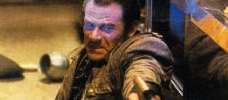
Trancers
1985 -
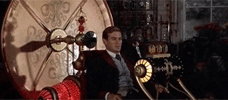
The Time Machine
1960 -

Groundhog Day
1993 -

Warlock
1989 -

The Navigator
1988 -
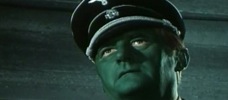
Tomorrow I’ll Wake Up and Scald Myself with Tea
1977 -

The Spirit of ‘76
1990 -

Flight of the Navigator
1986 -
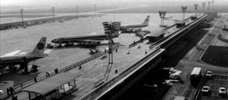
La jetée
1962 -

Twelve Monkeys
1995 -

Beastmaster 2: Through the Portal of Time
1991 -

Peggy Sue Got Married
1986 -
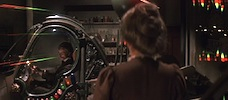
Time After Time
1979 -

Somewhere in Time
1980 -

Back to the Future
1985 -

Back to the Future Part II
1989 -

Back to the Future Part III
1990 -
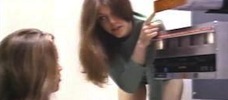
Idaho Transfer
1973 -
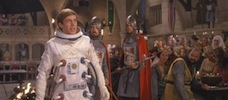
Unidentified Flying Oddball
1979 -
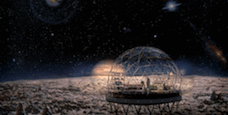
Slaughterhouse-Five
1972 -

The Lake House
2006 -

Time Bandits
1981 -

Doctor Who
1963–present -

Doctor Who
1963–present
We don’t do comments anymore, but you may contact us here or find us on Twitter or Facebook.



